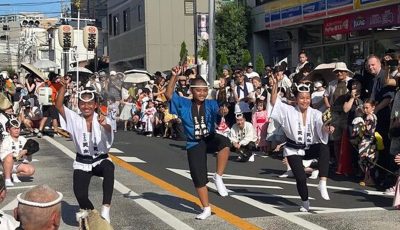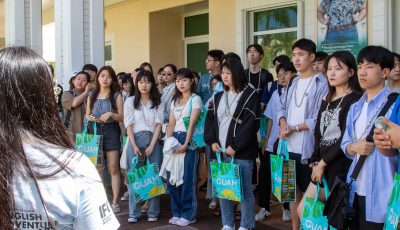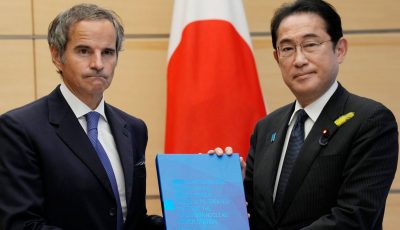Martyrs’ Day
The sun is out but the temperature is going to dip below zero C for the first time this season in Dong Bei, so I have the plants getting the full benefit of sunroom warmth with the windows closed and the TV on.
I’ve been to Tiananmen Square a few times since ’89 so the sight of it on TV is not unexpected, it being the central tourist attraction of Beijing, and before the nation go on a travel frenzy for a week at the end of September, the public TV is expected to run patriotic programs on the occasion of the 65th year of the nation since Mao Zedong declared the People’s Republic in-charge over the ROC that retreated with Chiang Kai-shek (bka Jiang Jieshi, or Jiang Zhongzheng in Chinese) to Taipei.
Sept. 30 marked the first Martyrs’ Day in China, and the public ceremony that had everybody who is anybody in Beijing gathered around the People’s Heroes Monument at the Tiananmen Square coincided with the decision 65 years ago to construct the monument, the day before the PRC independence.
Uniformed members of the Young Pioneers (charming without raised Mao red books) sang in winsome attires and smiles, held red and yellow flowers, as the laying of wreaths of flowers was ritually made by members of the People’s Liberation Army followed by the seven members of the Politburo standing committee led by President Xi Jinping and Premier Li Keqiang, who were then followed by all the other dignitaries to view eight relief panels carved around the monument.
The panels tell a visual story of the heroes the monument is honoring. It actually begins with those who fought the British during the Opium War when England waged war against the Qing Dynasty, when China banned the increasing sale and addiction of the population on the drug. Thus, the heroes’ monument goes back to the resistance against the British, which resulted in the first of what is now referred to us uneven treaties, the Nanjing Treaty, allowing opium trade to continue. Hong Kong also was ceded to England, emboldening the Portuguese and Spanish forces in the western Pacific.
The United States signed in 1843 the Treaty of Wangxia (site is now the Our Lady of Fatima Parish in Macau) that accorded U.S. business traders the same favored status as other foreigners, and to spite the Brits, the treaty with moralist America declared the opium trade illegal. Not surprisingly, the second Opium War broke out in 1856 lasting until 1860, this time including the French who also demanded free access to anywhere in China, legalize opium, cancel levies and tariffs, allow coolie trade, and other concessions from cultures convinced of Aryan supremacy, and a passivity that naturally thought of itself as the middle kingdom. The greed caravan was joined by the U.S. and Russia, and later, Germany and Japan.
Heroes of the 1911 revolt get a relief column, resulting in the Qing’s abdication and the declaration of the 1912 republic. Come next are the soldiers who fought in the emboldened imperial Japan that humbled the Russian Tsar’s Navy, and moved population and technology to Manchuria it considered as north of the Great Wall and thereby not China proper. Manchuria had the tug-of-war between Russia and Japan, led Nippon in the Mukden (now Shenyang) incident to the War of 1931, which lasted until the end of WWII in 1945.
The eight bas-reliefs include the destruction of Opium (1939), the Taiping Revolution (1951), the 1911 revolution, the May 4th movement (1919), May 30 movement (1925), Nanchang uprising (1927), war of resistance against Japan (1931-45), and the crossing of the Yangtze during the Chinese Civil War (1949).
China has the Qing Ming (literally, clear and bright) festival in honor of ancestors (kin rather than vocation) where the tombs are swept but the Martyrs’ Memorial Day accent works of self-sacrifice and liberation, both military and civic. As one of the day’s commentator said, “A nation without martyrs is just a collection of mediocre individuals.” China’s legislature instituted this holiday for its own soul.
The U.S. commemorates Memorial Day in May for its dead soldiers, a consequence of its Civil War experience. Russia has Victory Day when it turned German forces from occupying Russia. The Commonwealth of Nations (U.K., et al) observes November after WWI as its memorial for its honored dead. Japan has made it clear (and rightly so) that who Japan honors in shrines is their business, and how it tells its story regarding Korea and China is a matter for its own soul.
Christendom observes All Saints Day and All Souls Day. (Christians were frowned upon when making profit off his neighbor, Protestants say with historical accuracy, so the Vatican reserved purgatory where their souls stayed, enjoyed profit and still could pay off their way to heaven!)
Birthdays and funerals are given certitudes. They are remembered commonly and privately. China offers a new definition to being a martyr. We can now decide how to offer our own deaths as an integral part in intentionally living our lives.



























